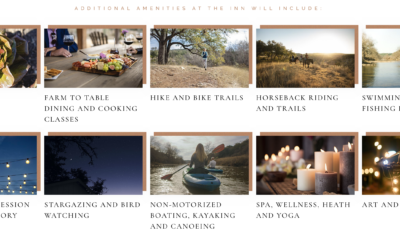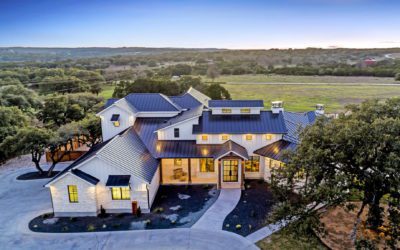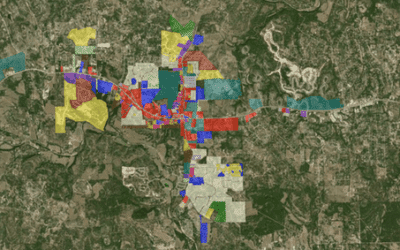
In Austin, Texas — where the average summer day peaks at more than 90 degrees — air conditioning seems … important. It’s widely credited for making Texas habitable, and one reason why the state’s population has grown in every single Census since it was admitted to the union. And yet, when an AC-free home in quickly gentrifying East Austin hit the market earlier this year, it sold within four days — for an almost-unheard-of $850,000 above the listing price.
“Granted, it was a super-cool house, but still,” says Matt Richard, an agent under the Giles Group at Moreland Properties in Austin. It’s true — the home has solar power, a charming historic design and an even older form of cooling off: a salt water swimming pool. But those amenities aren’t worth much, let alone nearly a million dollars, without central air.
Most experts agree that Austin’s real-estate market is the craziest in the country right now. According to the Austin Board of Realtors (ABoR), median home prices hit a record $465,000 this month — the fourth straight month it’s set a record, and fifth out of the past six. Year over year, prices are up more than 42 percent and well above pre-pandemic prices, too. And while the organization says housing inventory is “critically low,” more than $2.3 billion was spent on Austin area housing in May alone. And supply is having trouble keeping up with demand — as of May, the monthly housing inventory had less than a months’ worth of inventory, meaning only enough houses to sate the market for two weeks. There were 4,413 listings that month; but there were also 4,355 houses pending sales. And as of June 29, ABoR only had 1,116 houses listed.
As things stand now, the average time a house spends on the market is just 15 days. A year ago, it was two months. And that’s the average — a desirable home will likely get snatched up much faster. “There are times when an offer deadline is set for Sunday or Monday after being listed during the week, so you think you have all weekend to see it,” Richard says. “But the sellers may get a killer offer and decide to accept prior to the deadline — and now your clients who were planning to see it on Sunday missed out.” Richard estimates that the average house still receives five to 20 offers during this truncated window, and relays a story about a home in Brushy Creek — a nice enough area in nearby Cedar Park, but hardly aughts-era Williamsburg in terms of trendiness or desirability — receiving 96 offers in one weekend. “Totally insane,” he says.
And this only counts properties on the open market. Private sales, which typically involve higher-end houses, don’t factor into those numbers at all. This includes homes sold directly by builders, who aren’t required to report their figures to the realtor board, according to ABoR president, Susan Horton. She cites a much-talked-about house on Lake Austin, popular with the ultra-wealthy, that recently sold for roughly $39 million to an unknown owner, likely a record for the city. Which means that these numbers probably understate just how frenzied the market actually is.
All those facts and figures can blur together, but the anecdotes passed around at kids’ birthday parties and backyard barbecues help clarify the picture. (And it doesn’t take long before a conversation turns to real estate these days.) Take the one about a couple in Mueller, a planned development with houses, condos, and multifamily units, all on the grounds of the city’s former airport. This couple bought a two-story, three-bedroom, three-bath house for $776,000. Then they got divorced. Less than eight months later, after hardly touching the place, they sold it for nearly $1 million — $200,000 more than they originally paid.
“I’m writing 20 to 30 offers a week,” says Horton, “and I might get one accepted. That’s amazing. It’s amazing.” She mentions a home in nearby Manor that sat on the market for 48 days — basically, unheard of right now, and a sign that the home has “some issues,” as Horton puts it, citing a 19-year-old roof as just one example. It was listed at $345,000; Horton’s client made in offer “in the 300s.” Someone outbid them. “They probably got 375 or close to $400,000 for this home. Somebody is going to go in and do all that work — put a $10,000 or $15,000 roof on it, put a new AC system in, and flooring and paint — and they’re going to have another $20,000 or $30,000 invested in it, on top of what they’ve already paid.”
So what is it about Austin in particular that is fueling such an extreme situation? Sure, home prices are up all across the country, but nowhere is seeing the kind of month-over-month increases that Austin is, let alone the mass delirium of buyers waiving inspections and other traditional safeguards. It’s not geography — unlike other hot markets, which are limited by being an island or sitting on a bay, Austin could expand infinitely in any direction, with plenty of housing for all. It’s not the culture, either — yes, Austin is the self-proclaimed Live Music Capital of the World, and its progressive politics earned it the memorable nickname “the blueberry in a bowl of tomato soup” from noted wordsmith Rick Perry. (Plus, being in Texas, you get the best of both worlds — a welcoming culture with zero income tax.) But then again, Nashville could make the same claims, and the market there is nothing like the one here.
The flood of tech people who’ve been steadily descending upon the city is certainly part of it. Dell was already a big player (as were the so-called Dellionaires who populated the city’s wealthier neighborhoods). For more than two decades, South by Southwest Interactive has attracted plenty of startups and budding entrepreneurs who never ultimately left — not for nothing did Austin earn the nickname Silicon Hills. Still, it’s all ramped up in the past year or so: Oracle is moving its headquarters here, Tesla is building a gigafactory, and Apple is building a massive campus as well. Even the military is getting in on it, with the US Army’s Futures Command headquartered in downtown Austin, just a few blocks from Google’s offices.
As it did with everything else, COVID scrambled things even further. “Prior to the pandemic,” Horton says, “our market was very stable, and we were in good shape,” she says. “There was enough to go around for all realtors, and realtors were making good sales, and life was happy for everybody.” When coronavirus restrictions hit, however, realtors were constrained by shelter-in-place orders, limiting their ability to show homes and sell houses. The market stalled.
Horton identifies three types of people who suddenly got the itch to buy a house: Families who felt penned up in their current ones; millennials who saved up money while living with their parents or in an apartment; expats from California and elsewhere looking for a desirable yet (relatively) affordable place to live, in a state with, again, no income tax. “And with that, the money came with it,” she says. Buyers, particularly those from out of state, “saw the value of a home based on where they were coming from, and they were more than willing to pay the difference. And therefore, the bidding frenzy started.”
Taken together, demand soon far outstripped supply, leading to charts like Zillow’s market overview for Austin and adjacent suburb Round Rock: a steady progression for eight years, followed by a rapid hockey stick–style rise for this year and next. Zillow projects the median home price to double what it was in March 2019 by May 2022; if anything, that seems conservative.
Anyone who has spent time in Manhattan or the Bay Area knows the next part of the story: The non-rich have been effectively priced out of Austin — the Department of Housing and Urban Development puts the national median household income at $79,000. Based on traditional guidelines like budgeting 28 percent of your income for mortgage payments, or purchasing a house worth two to two-and-a-half times your annual salary, that means the average family can afford a home between roughly $150,000 and $275,000 — barely half the median selling price of an Austin home right now. Crunch the numbers however you want, though, and the result is the same: The average American family can’t buy a house in Austin. That includes area public-school teachers, who start at $51,000 and max out in the low 60s. “The days of $250,000, single-family homes in Austin are gone,” says Vaike O’Grady, regional director for the housing-market research firm Zonda. Or, as Texas Monthly editor Forrest Wilder pointed out on Twitter, “People in the timeline keep saying, understandably, that this trend isn’t sustainable. I get it, but check the median home value in San Francisco: It’s $1.8 million. Austin has a ways to go to get there, but any reason why that couldn’t happen?”
At the current moment, barring something unforeseen, it’s hard to imagine anything that would cool the market. Those Oracle, Apple, and Tesla employees have yet to arrive. (The city already has a low unemployment rate, so it seems unlikely to furnish all the necessary workers.) In 2020, the city saw roughly 20,000 new homes constructed, enough to rank fifth in the country, but not enough to keep pace with the influx of new arrivals.
Still, according to Zonda, in the first quarter of this year, 6,664 new homes were constructed, an annual 27,000-home pace. And O’Grady notes a few other encouraging factors: Lumber prices are stabilizing, more than 18,000 future lots are in development (7,000 more than last spring), and the city’s notoriously low permitting process will get a boost from the roughly 40 new hires approved by the city council. That said, she also notes that overwhelmed builders are still limiting their capacity — which she compares to pushing “watermelon through a pipe” — and even a modest increase in supply won’t be enough to meet demand. After all, the city grew by 21,223 in 2020, according to Austin’s Housing & Planning Department, and is projected to grow by almost that same amount in 2021. (These figures don’t include the surrounding metro area.) That’s less growth than the mid-’10s peak, but represents an uptick from the previous two years.
All of which to say is that soon, $2.6 million for a Texas house without AC might seem like a bargain.
Source: https://www.curbed.com/2021/07/austins-real-estate-market-inside-the-frenzy.html?utm_source=Master+List+%28Constant+Contact%2C+Google%2C+Command%2C+iCloud+etc.%29&utm_campaign=2f053bb954-EMAIL_CAMPAIGN_2021_05_05_04_42_COPY_01&utm_medium=email&utm_term=0_af8e76c8ed-2f053bb954-508613294







0 Comments